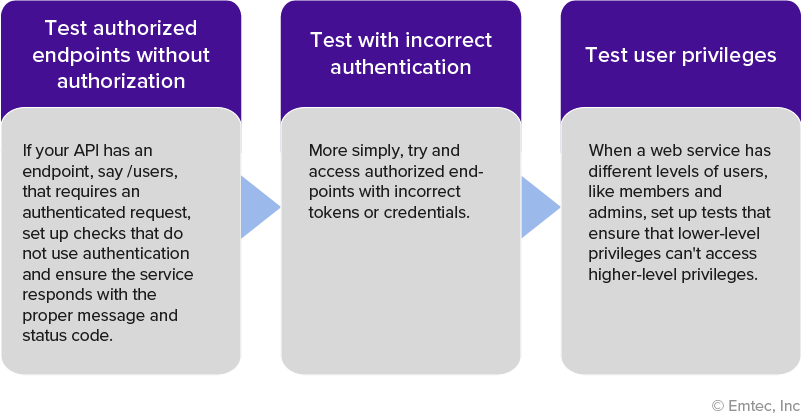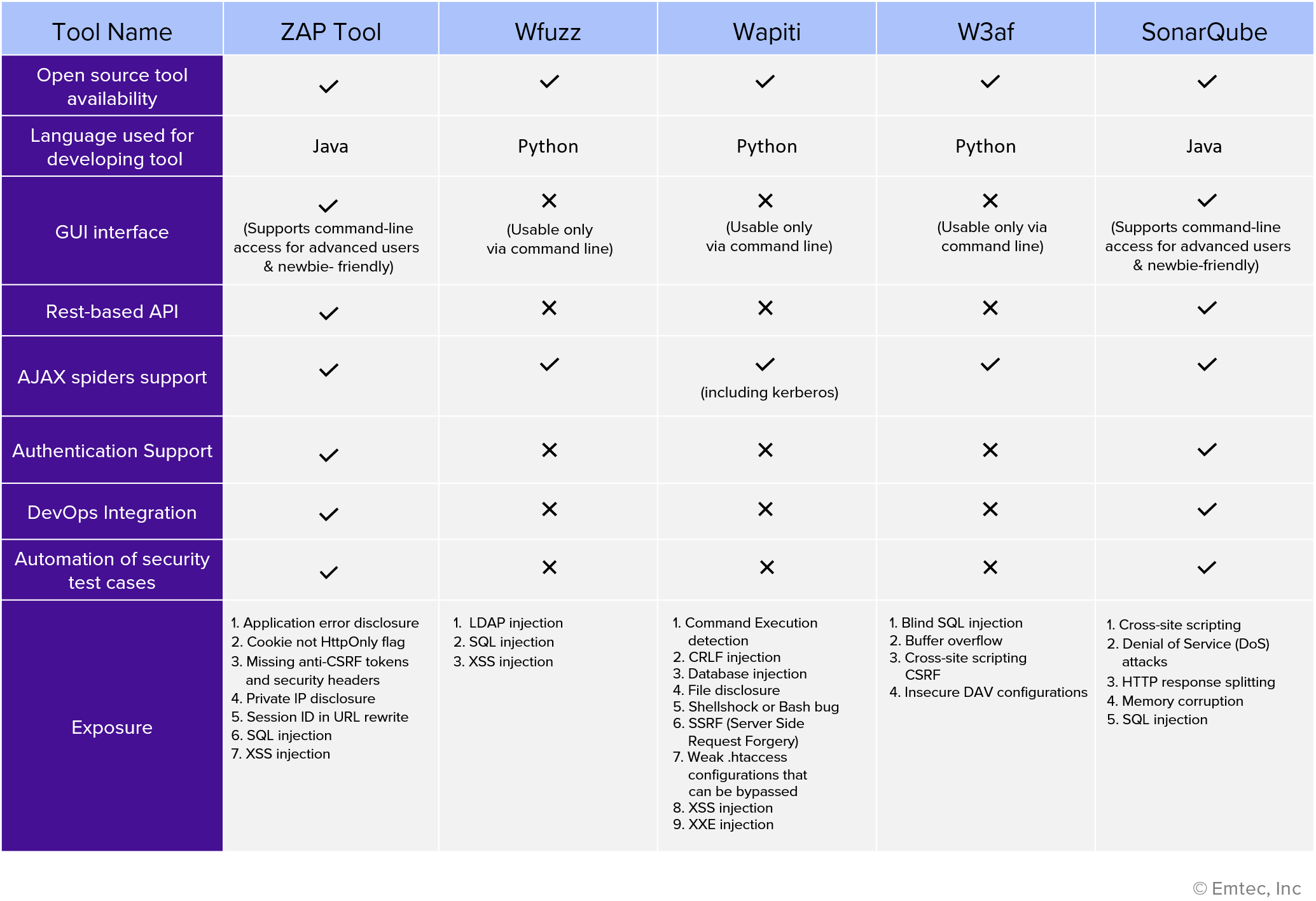04.01.21 By Bridgenext Think Tank

Gone are the days when a web application meant a website. The explosive adoption of cloud and mobile have paved the way for new use cases including payroll systems, marketplaces, banking, and stock trading and more. Besides ease of use and convenience, application security is of paramount importance in maintaining customer trust as most web applications receive and utilize personal information. A robust security testing program is critical to ensure customer PII is protected.
In this blog, we will focus on application security testing methods, their benefits, and some of the top automated security testing toolsets available.
Application Programming Interface (API) security testing ensures software applications are secure at the code level. Ensuring that APIs are error-free helps avert hackers. This is accomplished through Fuzz Testing, Penetration Testing and Security Testing. API testing:
The graphic below depicts the stages of the API Security Testing Method for web and mobile applications. Using these methods safeguards applications against risks such as injection flaws, data exposure, broken authentication, and more.

The need to authenticate scenarios is an important step in security testing. It allows software developers and testers to walk through the actual user experience and journey while using the application. Each movement a user would take in the application is reviewed and then tested. This is an important step in determining the significance and nuances to be followed while creating test scenarios and authenticating them.

Manual security testing is generally completed towards the end of the software development cycle. It can be a cumbersome process that could invite unnecessary shortcomings. Automation in security testing is best achieved at the beginning of the development cycle and offers several advantages.
The automated tools market is filled with a plethora of options. Besides assuring application security is solid, they offer the ability to significantly reduce the manual labor and time involved in security testing.
The tool selection process depends heavily on your organizational requirements and priorities. The right tool, however, should be user friendly, easy to understand, well documented and offer seamless CI/CD integration. It should also provide application insights and report options that help your testing team reduce the amount of false positive results while testing.

Based on our comparison of the top five open source security testing tools for web applications, the ZAP tool provides efficient features, ease of use and quality automation support with a solid user community.
Which toolset is best for you? Each tool provides a slightly varying degree of functionality. The right tool will be determined by your specific requirements including your business and technology needs, project, team, budget, and other such factors.
The significance of API security testing is growing every day. With the increasingly rising concern of exposed user data, the protection and security of applications has become paramount. By identifying vulnerabilities early in the software development process, engineers can categorize these vulnerabilities and defend against them by creating diverse scenarios. The use of automated tools enhances both the quality and agility in your application security testing programs.
It’s time to streamline and reduce time spent on security testing for your robust applications while ensuring user data is secure. Contact our experts, today.